To date, spider silk remains a subject of curiosity for scientists who are exploring its various benefits in everyday life.
The fascinating and intertwined facts about spider silk are gradually being unveiled. These soft, silky strands can be so durable that they are used for fishing nets and many other applications.
What is Spider Silk?
Most people sweep away spider webs and avoid dense spider nests at all costs, but now it’s time to discover their benefits.
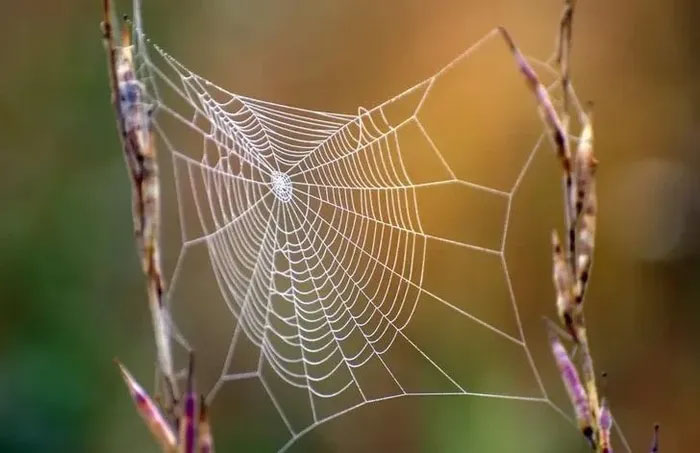
This type of silk is the strand that spiders use to weave their webs.
Spider silk is a protein fiber spun by spiders. This silk is what spiders use to construct their webs. It hangs in the air and is incredibly lightweight.
Spiders use it to catch and trap prey. It is how they build their nests and create cocoons. They can even use their silk to glide away from predators. When sunlight or light shines through a spider web, you can see how intricately the silk strands are woven together.
All Spider Species Produce Silk, Even Those That Don’t Weave Webs
Many people do not realize that this “silk” is also intricately woven into the mating rituals and courtship of spiders.
The silk acts similarly to a transmission channel or a vibrating bell, sending signals through vibrations along the silk strands. Humans and spiders may have more in common than we realize. Another lesser-known fact is that not all types of spider silk are the same.
A spider can produce up to seven different types of natural silk, depending on the species, circumstances, and life cycle.
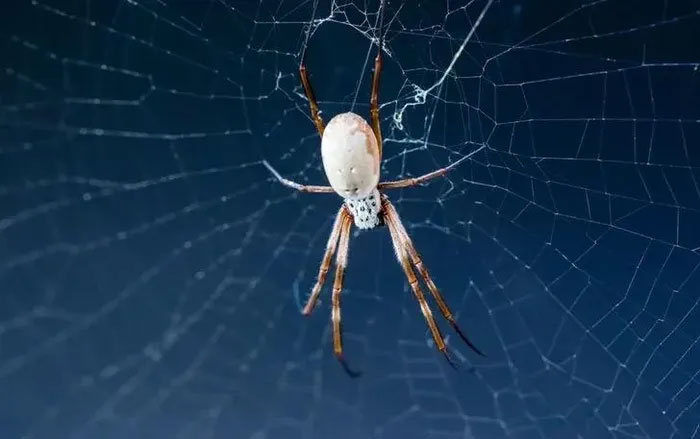
A spider can produce up to seven different types of natural silk.
The specific types of spider silk include:
- Ampullate Silk is the type of silk produced by the spider’s major ampullate gland. This is the silk used on the outer part of the spider’s web. It is extremely durable but can also retract quickly depending on various factors.
- Minor Ampullate Silk is produced by the spider to create scaffolding and temporary reinforcements during web construction.
- Flagelliform Silk is the type of silk used by spiders for the capture lines of their webs, referred to by scientists as “spiral silk.”
- Tubuliform Silk is the silk used to create cocoons, which serve as protective homes for egg sacs.
- Aciniform Silk is the type used by spiders to wrap live prey.
- Aggregate Silk produces a fluid-like silk secreted from adhesive threads composed of sticky globules.
- Piriform Silk generates a glue-like silk that spiders use to bond different strands of silk together at crucial attachment points.
Applied Scientific Research on Spider Silk
Spider silk has numerous applications in science, particularly as researchers leverage its properties such as durability and elasticity to create familiar objects in daily life.
Spider silk is finer than human hair and is also the strongest fiber found in nature. Spiders can produce silk strands in just a few seconds under complex environmental conditions.
The structure of spider silk is a vast network that includes intertwined components and characteristics. The silk features “glycine, alanine, and small amounts of serine.” It is “a natural polypeptide, a high molecular weight protein” related to collagen found in human ligaments and keratin in nails and hair. The protein composition of spider silk is determined by the gland from which it is secreted.
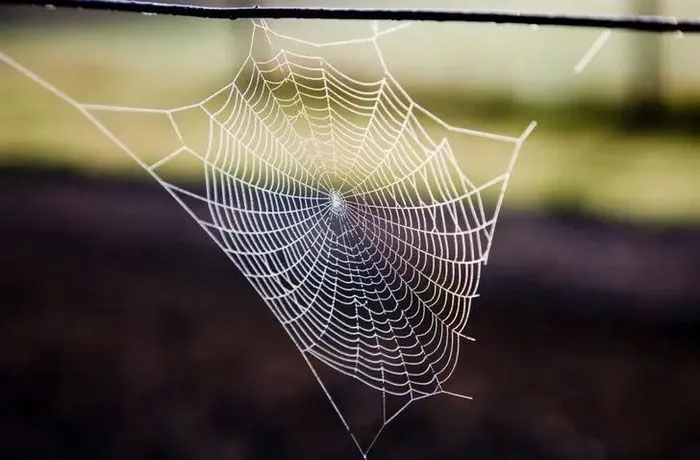
Spider silk has many applications in science,
It involves “the complex self-assembly process of silk proteins into distinct polymers.” These biosynthetic materials form the basis for new products. The amino acid sequence in silk proteins consists of “alanine and glycine,” while serine and proline are also present in some types of silk. Glycine-rich silk provides spider silk with “elasticity, forming amorphous regions in its structure.”
Tensile strength is a term that describes “the amount of stress a material can withstand before it begins to break.” The tensile strength of spider silk ranges from 0.45 to 2.0 GPa. Surprisingly, steel falls within the same range as spider silk.
Moreover, silk is a soft material and can reduce its length by nearly 60% when exposed to high humidity. This phenomenon is known as supercontraction. It’s as if it transforms from glass to rubber. An incredible transformation.
How is Spider Silk Different from Silk from Silkworms?
Of course, spiders are not the only insects that produce silk. There are other species known for their ability to spin fibers, which humans have utilized practically.
Among the commonly used species is the silkworm. While spider silk is referred to as “super silk”, silkworm silk is a type of silk widely used in the fashion industry. The silkworm is actually the larval stage of the silk moth known as Bombyx mori. It feeds on mulberry leaves and, unlike spiders, it is entirely dependent on humans for reproduction.
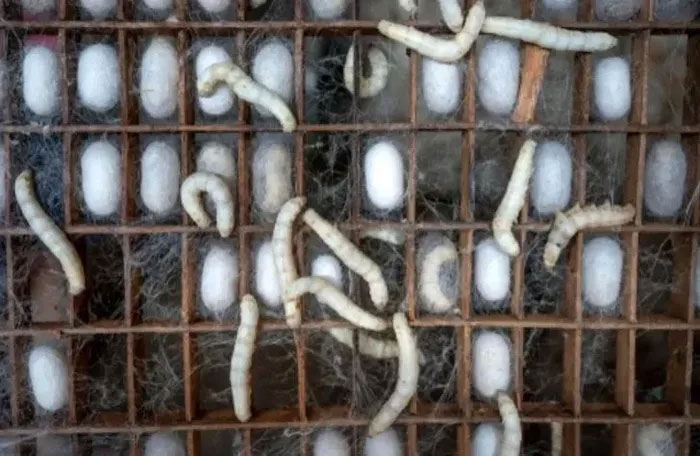
The silkworm is actually the larval stage of the silk moth known as Bombyx mori.
It is a freshwater insect that has been cultivated for millennia. The domestication and breeding of these species have existed for at least 5,000 years, dating back to ancient China. It is found in India, South Korea, Japan, Nepal, and all around the world today. Silkworm silk is now used in clothing production, surgical sutures, bicycle tires, and even umbrellas.
Some scientists believe that silkworm silk could be as durable as certain types of spider silk and that this silk can be harvested through proper cultivation methods.
What is the Value of Spider Silk?
Our ancestors greatly valued the significance of spider silk in nature. It was once used for healing purposes, such as wound dressings and fishing nets.
As our society changes, so do perceptions of value. In an increasingly commercialized global world, the inherent value of spider silk becomes even more noteworthy. The creation of “synthetic spider silk” on a large scale has been a primary goal in materials science research for centuries.
This research continues to describe two main manufacturing methods.
The first is biomimicry, a technique used for various needs and desires. Scientists are studying how to mimic the process by which spiders produce their super fibers. This technology imitates the natural process where “spider silk proteins (spidroins) are produced under conditions similar to nature and then drawn into fibers.” However, so far, these synthetic spider silk strands have not matched the mechanical properties of natural spider silk.
The second method is carried out in laboratories using biotechnology to produce “large spidroins that can be drawn into fibers using organic solvents.” With this approach, scientists have successfully replicated the mechanical properties of natural materials, but the yield from this method is too low to ensure large-scale production.
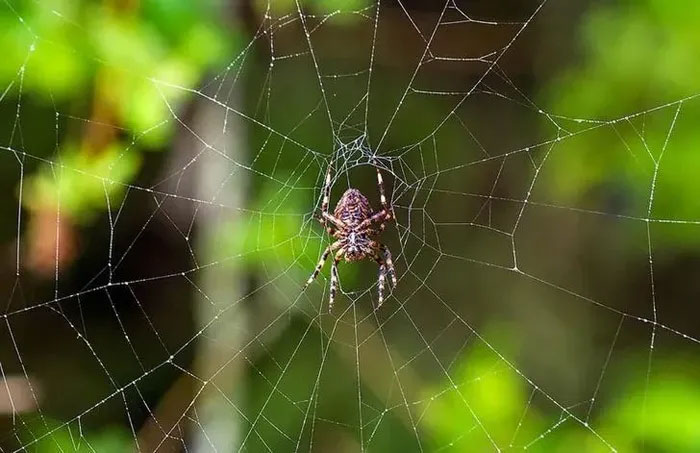
Spider silk will also contribute greatly to medicine and materials science.
Research is ongoing regarding recombinant spider silk proteins, and water-based methods may be a viable approach.
The Urgent Race to Self-Produce Spider Silk
As mentioned above, spider silk possesses numerous mechanical properties that are beneficial for technological, business, and creative ideas. It is stronger than Kevlar, leading to predictions that spider silk could be a game-changer in the textile industry and in sports items like skiing and climbing gear. Scientists have even considered using spider silk to create durable parts for robots.
Spider silk will also contribute to medicine and materials science, helping to shape and redefine the pharmaceutical and construction industries. With such advantages of spider silk, the race to apply silk in human life is becoming more urgent than ever. It’s just a matter of time before humans can produce spider silk abundantly and infinitely, just as spiders create their silk.


















































